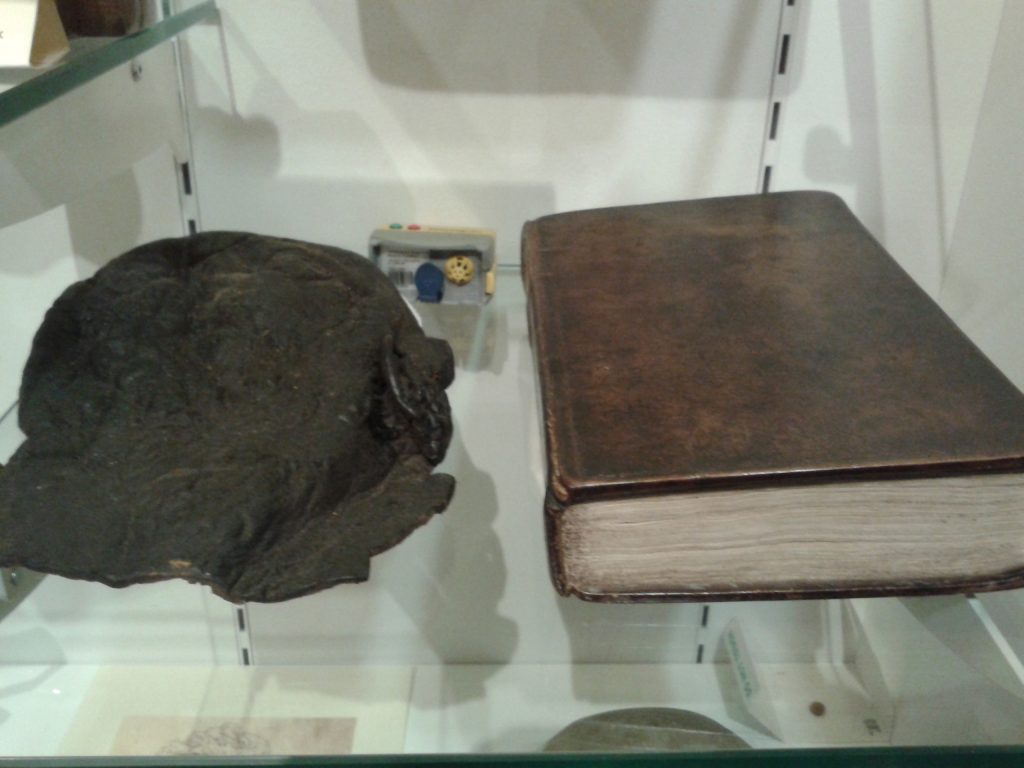Second Skin-Bound Book of Notorious Murderer William Corder Discovered in UK Museum

A dusty office shelf at Suffolk’s Moyse’s Hall Museum yielded a chilling discovery this spring—a second book partially bound in the skin of William Corder, executed for the infamous 1827 Red Barn Murder. Curators identified the 19th-century volume during routine catalog checks, its spine and corners clad in tanned human leather matching their existing Corder artifact. This grim find reignites debates about posthumous punishment while offering fresh insights into Victorian-era justice.
The Red Barn Murder: Crime That Shocked England
William Corder’s name became synonymous with horror after he lured lover Maria Marten to a Suffolk barn in May 1827. The 25-year-old farm laborer shot the pregnant woman and buried her beneath the floorboards. For nine months, Corder sent forged letters to Marten’s family claiming she lived in comfort on the Isle of Wight. The ruse collapsed when Marten’s stepmother described haunting dreams of the murder location, prompting a barn search that uncovered decaying remains wrapped in a sack.
Trial and Macabre Aftermath
Thousands gathered at Bury St Edmunds’ Shire Hall for Corder’s 1828 trial, where prosecutors presented damning evidence including the murder weapon and Marten’s remains. The jury convicted him in 35 minutes. After his public hanging drew 7,000 spectators, surgeons dissected Corder’s corpse—a standard punishment for murderers—and reportedly tanned strips of his skin. Medical professionals later used this leather to bind at least two books detailing his crimes, turning the killer’s body into a cautionary artifact.

From Storage to Display
Museum staff traced the newly discovered book’s provenance to a donation 20 years ago by descendants of Corder’s autopsy surgeon. Unlike the fully skin-bound volume displayed since 1933, this specimen uses human leather only on its spine and corners. Heritage officer Dan Clarke notes the find highlights how museums sometimes “rediscover their own collections,” while critic Terry Deary of Horrible Histories fame condemns both books as “ghoulish trophies” of judicial excess.
Human Skin Bindings: Historical Context
The practice of anthropodermic bibliopegy saw particular popularity among 19th-century physicians, who bound medical texts in patients’ skin as memorials. Judicial examples like Corder’s books served dual purposes—punishing criminals beyond death and creating visceral warnings. Modern peptide testing by the Anthropodermic Book Project confirms 18 authentic specimens worldwide, though museums increasingly debate displaying such ethically charged items.
Museum’s Balancing Act
Moyse’s Hall now displays both Corder books together, juxtaposed with gibbet cages and witchcraft trial records. The 12th-century building’s stone walls have housed prisoners and police, making it a fitting repository for these dark artifacts. While some visitors find the skin-bound books disturbing, staff argue they provide tangible links to historical attitudes about crime and consequence. The museum plans enhanced signage explaining the items’ contested nature.
As twilight falls on Bury St Edmunds, the two leather-bound volumes rest in their display case, silent witnesses to a murder that captivated Victorian Britain, and to the enduring fascination with justice’s material remains. Their cracked spines whisper tales of violence, vengeance, and the human body’s uneasy place in historical storytelling.

